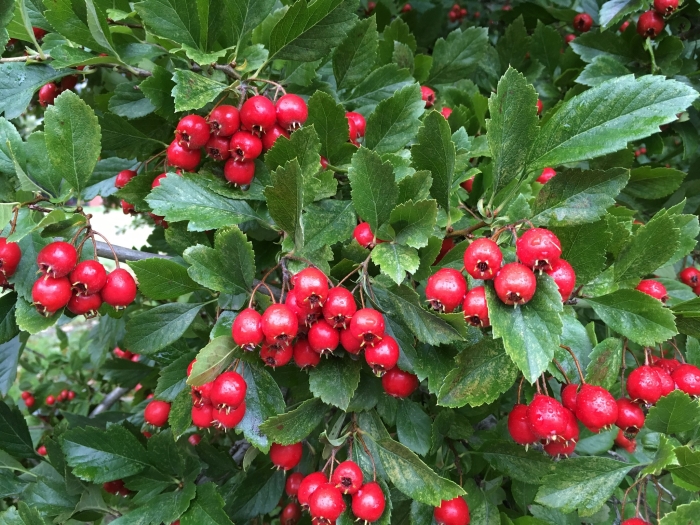Lavalle’s Hawthorn
(Crataegus ×lavallei)
Lavalle’s Hawthorn (Crataegus ×lavallei)
/
/

© Jon Sullivan
CC BY 4.0
Image By:
© Jon Sullivan
Recorded By:
Copyright:
CC BY 4.0
Copyright Notice:
Photo by: © Jon Sullivan | License Type: CC BY 4.0 | License URL: http://creativecommons.org/licenses/by/4.0/ | Uploader: jon_sullivan | Publisher: iNaturalist |





















Estimated Native Range
Summary
Crataegus ×lavallei, commonly known as Lavalle’s Hawthorn or Hybrid Cockspurthorn, is a small deciduous tree resulting from a hybrid between Crataegus mexicana and Crataegus crus-galli var. inermis. It typically grows to a height of 15-25 feet (4.5-7.6 meters) with a similar spread, and is noted for its glossy, dark green, unlobed leaves. The tree produces clusters of white flowers in late spring, which are moderately showy and attract pollinators. By autumn, the tree is adorned with abundant orange berries that persist into winter, providing visual interest and food for birds. The bark is smooth and gray, adding to its ornamental value. Lavalle’s Hawthorn is almost thornless, which is an unusual trait for the genus.
This tree is valued for its four-season interest, including its late-season red foliage and long-lasting berries. It is suitable for urban planting due to its tolerance of pollution and confined soil spaces, and it can be used as a specimen tree or in small groupings. Lavalle’s Hawthorn thrives in full sun to part shade, prefers well-drained soils, and is drought-tolerant once established. It has gained the Royal Horticultural Society’s Award of Garden Merit, indicating its exceptional performance in gardens. While generally disease-resistant, it can occasionally suffer from leaf spot and rust. It is not known to be invasive and does not have aggressive roots, making it a safe choice for residential areas.CC BY-SA 4.0
This tree is valued for its four-season interest, including its late-season red foliage and long-lasting berries. It is suitable for urban planting due to its tolerance of pollution and confined soil spaces, and it can be used as a specimen tree or in small groupings. Lavalle’s Hawthorn thrives in full sun to part shade, prefers well-drained soils, and is drought-tolerant once established. It has gained the Royal Horticultural Society’s Award of Garden Merit, indicating its exceptional performance in gardens. While generally disease-resistant, it can occasionally suffer from leaf spot and rust. It is not known to be invasive and does not have aggressive roots, making it a safe choice for residential areas.CC BY-SA 4.0
Plant Description
- Plant Type: Tree
- Height: 15-25 feet
- Width: 15-20 feet
- Growth Rate: Moderate
- Flower Color: White
- Flowering Season: Spring
- Leaf Retention: Deciduous
Growth Requirements
- Sun: Full Sun, Part Shade
- Water: Medium
- Drainage: Fast, Medium
Common Uses
Bird Garden, Border Plant, Hedges, Low Maintenance, Potted Plant, Showy Flowers
Natural Habitat
Native to the parent species’ regions, which include parts of North America and Europe
Other Names
Common Names: Carriere Hawthorn , Lavalle’s Hawthorn
Scientific Names: Crataegus ×lavallei , Crataegus mexicana var. carrierei , Crataegus ×carrierei , Crataegus ×lavallei var. carrierei
GBIF Accepted Name: